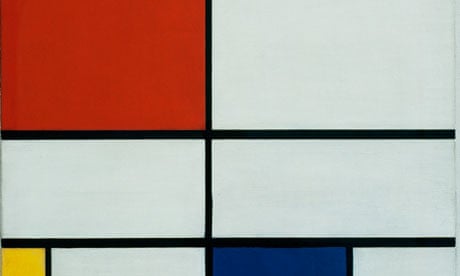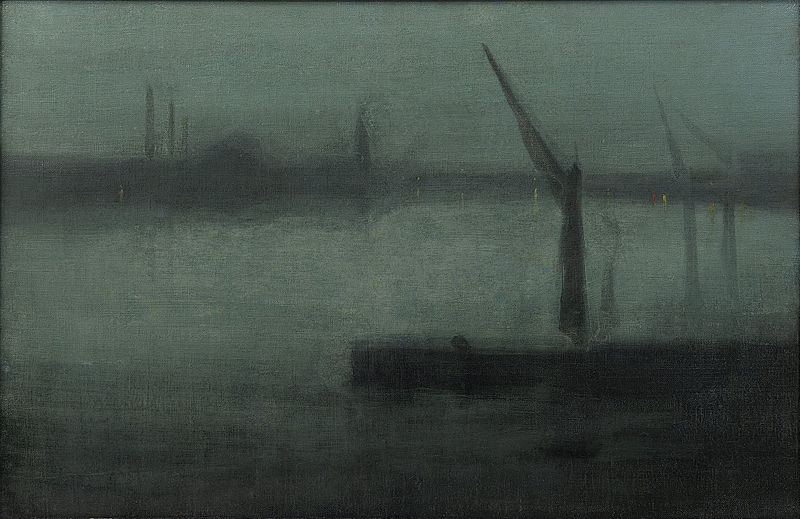Is it something early by Mondrian...?
Piet Mondrian, "Farmhouse with Washing on the Line", Oil on canvas, 1897
Or Thomas Jones?
Thomas Jones "A Wall in Naples", Oil on paper, 1782
Now these are both good guesses, as they both have similar qualities. Both are paintings of recognisable scenes, which are then simplified into flat, pattern making arrangements of colour and line.
Both of them are landscapes which cut out the spatial reference of the sky and focus in on flat planes and blocks of colour. Mondrian has the 'advantage' of living 100 years later than Jones, and jets off into modern art via landscape paintings like this
Mondrian, Dune Sketch in Orange, Pink and Blue (Oil on canvas, 1909)
and this...
Piet Mondrian, Composition (1935)
So what is our mystery painting? It's Green and Gold, A Shop in Calais (1896) by none other than James Abbott McNeill Whistler.
He's the American painter who produced such radical, minimalist, tonal works as this
Whistler, Nocturne Blue and Silver, Battersea Reach (Oil, 1875)
and this...
Whistler, Nocturne in Blue and Gold, Old Battersea Bridge (1872)
...and this magnificent screen in the Hunterian Museum in Glasgow, which made such an impression on me.
The screen was a favourite item in Whistler's home until his death, and he elongates the (in reality) rather dumpy supporting plinths of the bridge into elegant swooping Japanese-print-style symbols. It not only shares the flattened feel and pattern-making of prints, but also shares a Mondrian-like exploration of the horizontal and vertical.
I was in Washington over the summer, and found a stunning exhibition at the Freer Gallery of Art, which was dedicated to the studies and variations made on this screen, along with archive photographs of the demolition of the old wooden bridge at Battersea and building of the new.
It was fascintaing, but had one glaring ommission - they couldn't get the screen itself from Glasgow, as presumably it's too fragile to travel. The Freer is also home to the astonishing Peacock Room (the sketches of which are in the Hunterian), which was opened just as I arrived - good timing! The shutters are usually kept shut to preserve the colours.
Whistler's connection to Glasgow, in case you were wondering, is that his heir presented a huge amount of his work to the University of Glasgow. Whistler's mother and his wife were of Scottish extraction, and his work was enthusiastically acquired by Scottish dealers and collectors. In 1891, the Glasgow Boys group of painters persuaded the City of Glasgow to acquire an important portrait of Thomas Carlyle (painters must have had more clout in those days), thus becoming the first public collection in the world to own a work by him.









No comments:
Post a Comment